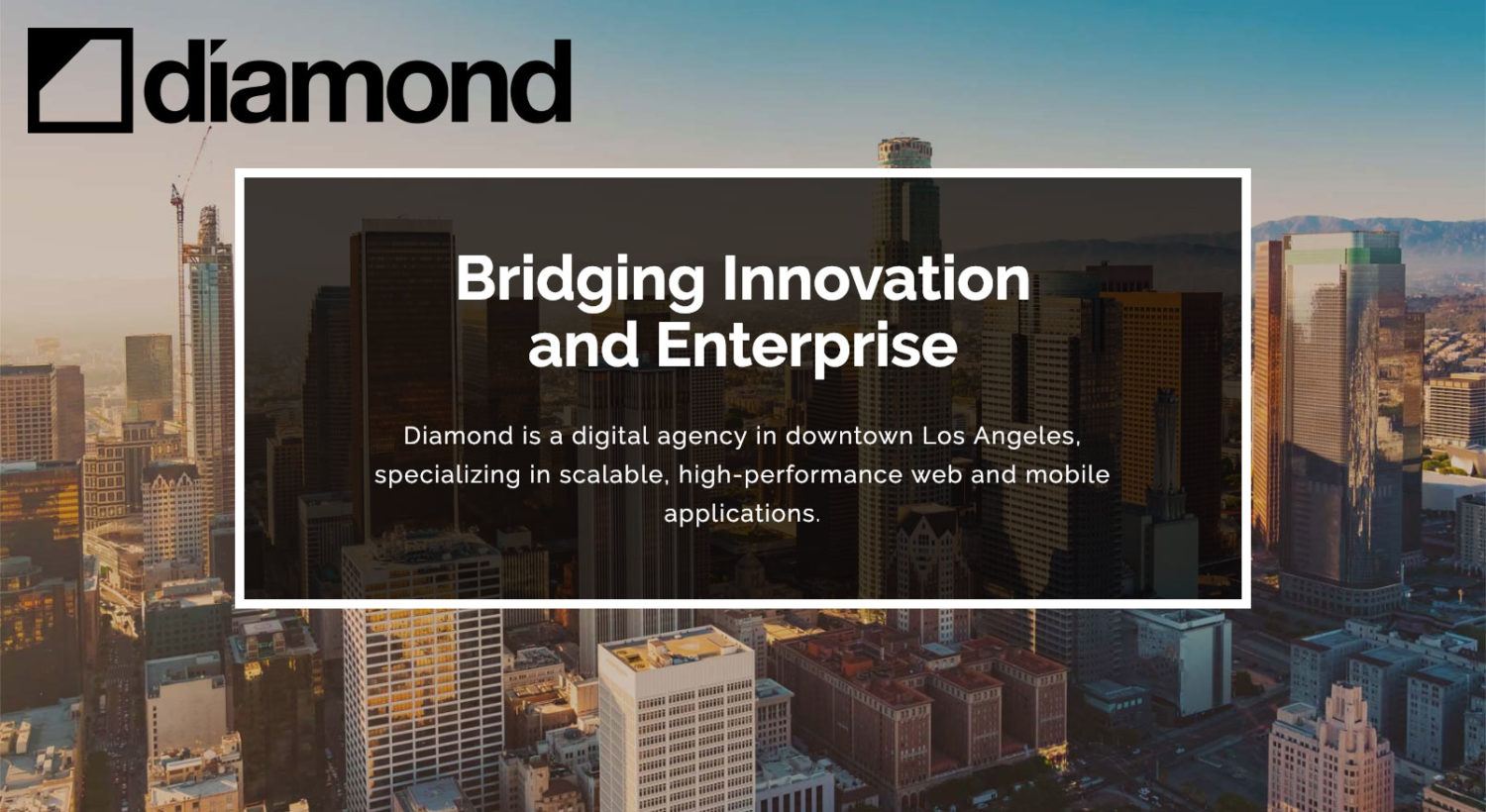Exclusives

Diamond: Bridging Innovation and Enterprise
Story Highlights
Diamond is a Los Angeles-based digital agency that’s been specializing in scalable, high-performance mobile and web applications since it was created in 2012.
Jonathan de Armas, a Diamond partner, recently spoke with the Media & Entertainment Services Alliance (MESA) about the origins of the company, what makes its mobile and web offerings unique in the media and entertainment (M&E) sector, the biggest challenges facing its clients, and other topics.
MESA: How did Diamond first come about? What was the impetus for the company?
De Armas: Robert Cuadra and Joe Devon were hired by me as specialists in their fields to re-architect AmericanIdol.com for season eight of the show. Following that project, Robert and Joe did several projects together both in and out of Fox Networks while I left for a run as CTO for a new music network and later returned to 20th Century Fox running development and architecture for digital asset management. Combining their experience at Fox and before, Joe and Robert co-founded Diamond in May 2012. Being well-known inside of Fox and throughout the development community as the tech guys that knew how to get things done, Diamond was quickly hired to do much of what our team had been doing internally at Fox. Several years later, I joined the team as a partner, bringing the band back together. And the rest is history.
MESA: What makes Diamond’s web and mobile app offerings unique in the M&E space? How does the company’s services stand out compared to others?
De Armas: Our executive team has decades of experience building world-class solutions for M&E companies, handling millions of users. We cut our teeth not just in the digital media space, but doing big data before it became a buzzword. We are techies through and through. We also were heavily involved in creating the tech scene in Los Angeles, providing a forum for the best technical minds in and out of Los Angeles to share their experience with the developers in Los Angeles. Through this experience, we got to know the core developers in tech stack we work in, as well as the best engineers in town.
Our network in the dev community is unparalleled. Last but not least, we always keep up with the latest innovations and keep active in the startup world, where it’s possible to experiment with the latest and greatest tech, and come back and provide experience once the technology is enterprise-ready.
MESA: What are some of the biggest technical challenges Diamond sees clients tackling today, when it comes to back- and front-end development, DevOps, etc.?
De Armas: Digital transformation is hitting enterprise companies hard. The core of the problem is that innovators are great at defining new markets and disrupting existing markets. But they are typically bad at scaling companies and worrying about cutting costs and creating fat margins. Operators come out to maximize profits, in the process creating an environment that pushes out the innovators. R&D does not show an immediate ROI. So they can’t get budgets approved for projects that are core to the future of the company. Until it’s almost too late.
MESA: What’s Diamond’s approach toward tech audits, and what are the most prevalent tech issues the company sees when auditing enterprise clients?
 De Armas: We’ve done several high-profile tech audits. What’s funny is that often the tech teams know what needs to be done, are excited to do it, but don’t have buy-in from the higher ups.
De Armas: We’ve done several high-profile tech audits. What’s funny is that often the tech teams know what needs to be done, are excited to do it, but don’t have buy-in from the higher ups.
The biggest value in tech audits has been to provide an outside perspective that leadership needs to enable their tech teams. The agile methodology is in vogue right now. But many enterprise companies only engage in agile in name only. Because budgeting is important, they often want a final number instead of the flexibility to build the best product possible. We even approach our contracts in an agile fashion.
In brief, we provide an estimate of the work to be done, but charge Time and Materials. Once we build trust, that’s easier to do. But if the new client needs a number, i.e. a fixed bid, we provide a SOW for one or two months at a time, so our risk is lower, and the scope of work tends to change less. So the education begins right at the contract level, and before long the client understands that they are learning a new way of doing things.
MESA: What are some of Diamond’s favorite media and entertainment use case examples, where M&E companies made especially good use of your services?
De Armas: Perhaps the most interesting project recently: Diamond worked with Mayfield Robotics, building their cloud infrastructure (Internet of Things, APIs and mobile apps) for their revolutionary Kuri Robot. This allowed the Mayfield team to focus on their core competency, the robotics, helping bring the new generation of social robots into the home. This cute robot wanders the home, capturing moments you may miss otherwise, and Diamond’s contribution allows these moments to be stored and shared in the cloud. In addition to software, we help our clients audit their own internal technical processes.
Recently, we worked with Beachbody, which is in transition from being a marketing company that sells DVDs to a modern company that sells subscriptions, and in big numbers. We have formed deep relationships with the entire executive tech team and helped them communicate better to the leadership how to deliver more reliable software products in an agile fashion. We also continue to have a very deep relationship with Fox Networks, where we are helping them create their direct to consumer and over-the-top (OTT) television products.
These products are how the audience is able to watch their favorite programming from the device of their choice, without requiring a cable subscription. Diamond has built APIs, user interfaces and automation for many parts of the Fox organization including: Fox.com, TheSimpsonsWorld.com, FXNetworks.com, FX Plus (direct to consumer/OTT), Fox Nation (direct to consumer/OTT), National Geographic and Fox Sports.
MESA: What’s next for Diamond? What advances and innovations in the M&E space are the company looking forward to?
De Armas: Not too long ago, companies believed it was simply too costly to unilaterally add closed captions to their digital media. Once federal regulations, like the ADA, required closed captions, it turned out they were useful in many applications outside accessibility. (Crowded bars, airports and mobile devices in loud spaces are ideal).
Recent lawsuits are forcing media companies to once again set their focus on the accessibility space for their digital media, websites and mobile apps. Diamond is poised to bring our skills and experience to this space. Our COO, Joe Devon, is the co-founder of Global Accessibility Awareness Day (GAAD). We offer accessibility training and certification to all Diamond employees (technical and administrative) and bring the conversation into all our projects. We look forward to partnering with new and existing clients to further improve their accessibility to engage an even greater audience more deeply.
For more information about Diamond, click here.









